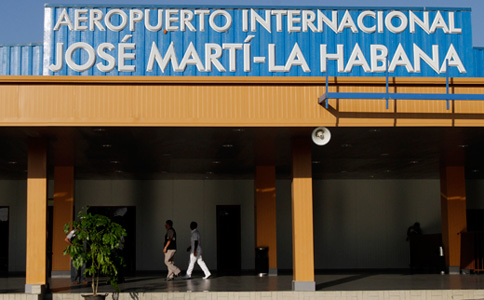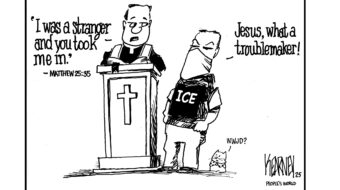
On October 16, the Cuban government announced new policies on foreign travel from Cuba to take effect January 14, 2013.
Beginning then, Cubans may leave the island for any purpose on presentation of a valid passport and an entry visa, if required. Prospective travelers won’t need to secure exit visas or letters of invitations from foreign hosts. They’ll save the $150 cost of the former and a $200 levy for processing the latter.
Permission to stay abroad is extended from 11 months to 24 months, when Cubans resident overseas must apply at a consulate for extended permission. Until now, Cubans overstaying their allowed time have risked losing citizenship and rights to social security, health care, and return. An old law enforcing confiscation of ex-citizens’ property is repealed.
Cubans living abroad will no longer need re-entry permits for return visits to Cuba. (In the past, the permits had targeted returning counter-revolutionaries.) Cubans permanently resident elsewhere may freely return for up to 180 days. Non-citizen Cuban residents may visit for three months, up from one month. Provisions are made for children’s travel and for workers to retain their jobs after foreign travel.
Some observers attribute impetus for the changes to hopes some workers recently laid off from state employment will find work overseas and send remittances home. More importantly, the government was responding to longstanding complaints from Cubans both at home and abroad.
Crucially, the stage is now set for upending one big part of the U.S. regimen of anti-Cuban hostility: the Cuban Adjustment Act. Editorializing on the reforms, Cuba’s Granma newspaper criticized “U.S. policy which encourages illegal emigration on the one hand and, on the other, creates obstacles for those who wish to emigrate in a legal, well-ordered and safe manner.” The purpose, they conclude, is to “foment internal destabilization.”
The Cuban Adjustment Act (CAA), a U.S. federal law enacted in 1966, gains unaccustomed visibility because of this change in Cuba’s foreign travel rules. That 1966 law insured that undocumented Cubans arriving in the United States would obtain social services and, a year later, authorization for permanent residence. Cubans were thus enticed into making perilous boat trips from Cuba, across the Florida Straits to Key West.
During the 1980’s the U.S. government forced many Cubans into the CAA mechanism by regularly failing to meet entry visa totals stipulated in old agreements. Refugees portrayed as having escaped communist oppression served propaganda purposes.
The CAA made for problems, however. In 1980 around 125,000 Cubans came by small boats from Mariel in Cuba to Florida. Local authorities at once had to provide for needy migrants competing with distressed locals for job opportunities and social services. To handle massed refugees more efficiently, U. S. authorities in 1994 diverted 40,000 Cuban rafters to U.S. military bases in Guantanamo and Panama and from there to the United States.
Subsequently the U.S. government, perhaps taken aback, began reliably to issue the 20,000 entry visas required by new migratory agreements. The U.S. Coast guard started to return migrants picked up at sea to Cuba.
In fact, opines Cuba analyst Walter Lippmann, “Washington set a trap for itself with the Cuban Adjustment Act.” That’s because with easier exit from Cuba, many Cubans can go to Canada or Mexico and then step across the U.S. border, or enter the United States by way of Europe, taking advantage of the United States not requiring entrance visas for European visitors. And significantly: the CAA depended on now non-existent Cuban exit restrictions for part of its propaganda appeal.
Some restrictions do continue. Foreign media have highlighted those applying to workers in economically, militarily, and strategically important sectors. Health workers, scientists, and high-profile athletes are affected. Foreign travel is also restricted for criminal defendants, Cubans ready for the military draft, and others subject to national security considerations.
Cuban planners have long tried to deal with the same disappointment other poor countries face in providing university training for young people only to see industrialized nations benefitting from their skills. The much resented exit restrictions represented Cuba’s response to this “brain drain.”
Over 50 years ago, the hewly victorious Cuban revolutionaries found that by 1961 half of Cuba’s 6000 physicians had departed, mostly to the United States. Cuba subsequently prepared 80,000 of its own physicians thus becoming vulnerable to cruelly aggressive hostility. The United States, at least 20 percent of whose practicing physicians were schooled in poor countries, mounted its “Cuban Medical Professional Parole Program” in 2006. Cuban doctors serving on overseas missions are offered inducements to abandon Cuba for the United States.
Interviewed on October 19, Washington lawyer and Cuban native Jose Pertierra observed, “Perhaps President Obama sees the irony that Cuba recognizes the right of Cubans to visit the United States, but that Washington keeps on violating the right of U.S. citizens to visit Havana.” Pertierra called for an end to U.S. travel restrictions, repeal of the CAA, and no more “measures designed to seduce Cuban doctors.”
Photo: The entrance of Havana’s José Martí International airport in Cuba. José Julián Martí Pérez (1853 – 1895) was a Cuban national hero, an activist, jorrnalist and political theorist. Franklin Reyes/AP










